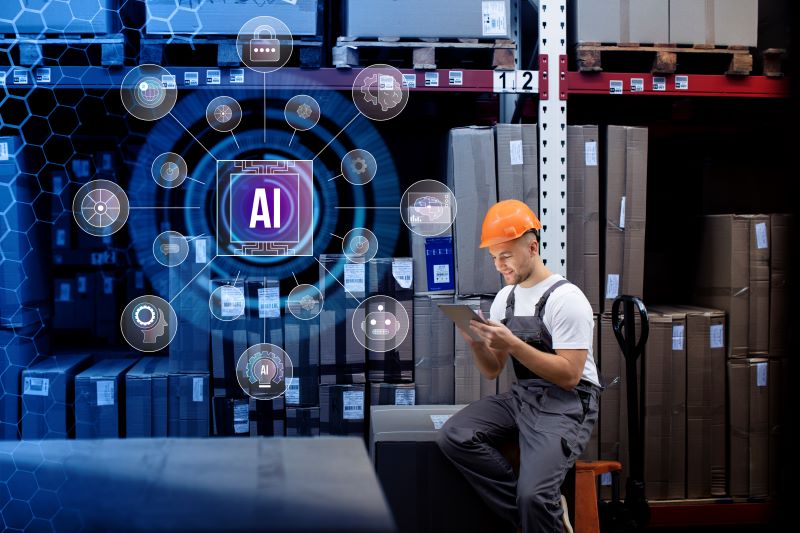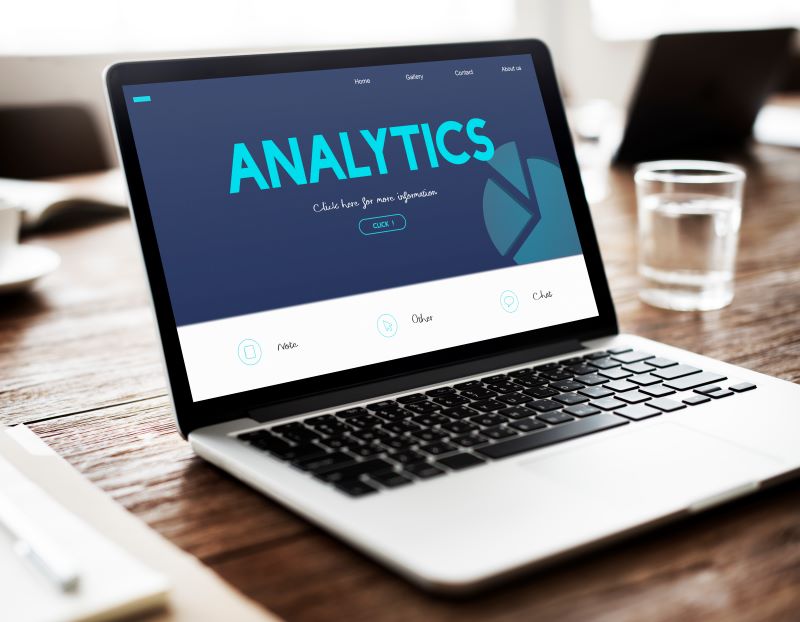2024: AI-Powered Web Scraping: Use Cases & AI Analytics
Artificial intelligence is everywhere these days, and it’s not going away anytime soon. If your business has been hesitant about using AI analytics for everyday tasks, including web scraping, you’re likely missing out on a lot of advantages.
Table of Contents
If you’re new to the world of AI analytics, this guide can help. Learn more about AI and analytics, as well as how you can use AI in web scraping, below.
What Is AI Analytics?

AI analytics uses artificial intelligence technologies and techniques to analyze and interpret data, extract valuable insights, and make data-driven decisions.
AI analytics leverages several advanced technologies to automate and enhance the analysis process, including the following:
- Machine Learning (ML): Machine learning algorithms allow systems to learn from data and enhance performance over time without explicit programming. In the context of analytics, machine learning can be used for predictive modeling, clustering, classification, and anomaly detection.
- Natural Language Processing (NLP): NLP allows machines to understand, interpret, and generate human language. In AI analytics, NLP can be used to analyze unstructured data, such as text from documents, emails, or social media, to extract meaningful information.
- Deep Learning: Deep learning involves neural networks with multiple layers (these are known as deep neural networks). Deep learning models are particularly effective in handling complex and large-scale datasets, making them useful for certain analytics tasks.
- Cognitive Computing: Cognitive computing systems aim to simulate human thought processes. They can be applied to analytics to understand and interpret data in a more human-like manner, making it easier to uncover patterns and insights.
- Automation: AI analytics often involves the automation of routine analytical tasks, allowing organizations to process and analyze vast amounts of data more efficiently. This can include automating data cleansing, feature engineering, and model selection.
AI Data Analytics Components
AI analytics consists of four primary components. Here’s a quick breakdown of each one:
- Descriptive analytics: Descriptive analytics summarizes and presents historical data to provide insights into previous events. The primary goal is to describe and understand the patterns, trends, and relationships so organizations can make sense of their data.
- Diagnostic analytics: Diagnostic analytics examines historical data to understand why certain events or outcomes occurred. It involves a deeper analysis and aims to identify the root causes of specific situations, patterns, or trends so organizations can gain insights into the factors that contributed to past successes or failures.
- Predictive analytics: Predictive analytics uses statistical algorithms and machine learning to analyze historical data and predict future events or trends. The goal is to forecast outcomes, trends, or behaviors based on patterns so organizations can optimize decision-making processes, mitigate risks, and identify opportunities.
- Prescriptive analytics: Prescriptive analytics is the most advanced type of AI analytics. It aims to provide actionable recommendations and insights by leveraging advanced algorithms, simulation, optimization, and decision analysis techniques to suggest the best action in a given situation.
Why Use AI Analytics?

Organizations can experience numerous benefits from relying on AI analytics. The following are some of the most significant advantages AI analytics offers:
- Data-driven Decision Making: AI analytics helps organizations make informed decisions based on data and insights instead of relying exclusively on intuition or past experiences. The result is more accurate and strategic decision-making.
- Improved Accuracy: AI algorithms can analyze vast amounts of data quickly and accurately, reducing the likelihood of errors. This precision is particularly valuable in predictive modeling, anomaly detection, and pattern recognition.
- Cost Reduction: Automating routine tasks through AI analytics can result in significant cost savings. By streamlining processes, organizations can operate more efficiently, allocate resources more effectively, and reduce the need for manual labor in specific tasks.
- Enhanced Customer Experience: AI analytics helps organizations better understand customer behavior, preferences, and needs. They can use this information to personalize products, services, and marketing strategies.
- Predictive Insights: Predictive analytics allows organizations to forecast future trends, events, and behaviors, helping them with proactive planning, risk mitigation, and opportunity identification.
- Automation of Repetitive Tasks: AI analytics automates repetitive and time-consuming tasks, allowing your team to focus on other activities and core competencies.
- Fraud Detection and Security: AI analytics can identify patterns and anomalies in data, helping with fraud detection and identifying other security concerns.
Web Scraping with AI: The Basics

You can use AI to streamline and automate numerous tasks, including web scraping. Web scraping is the process of extracting data from a website. Organizations can scrape websites and then use the data to make more informed decisions.
Artificial intelligence comes in handy in many aspects of the web scraping process, including the following:
AI data extraction
Organizations can use natural language process techniques to understand and extract relevant information from unstructured data on websites. They can also train machine learning algorithms to recognize patterns and structures in web data.
AI data extraction software can also scrape various kinds of information, such as contact information from websites or data from PDFs.
Anti-bot detection
Some websites have anti-scraping tools installed. You can bypass them, though, with AI-powered technologies. For example, you can use AI to automatically solve CAPTCHAs, one of the biggest challenges web scrapers face.
Dynamic content handling
It might initially seem counterintuitive, but you can use AI to simulate human-like website interactions. By doing this, you can scrape dynamically loaded content and train AI agents for more optimal website interactions — meaning they can navigate dynamic elements and website structure changes while scraping.
Data cleaning and transformation
Natural language processing can clean and preprocess text-based data scraped from websites, making the data more structured and usable. You can also use AI image recognition to analyze and interpret images on web pages.
Scalability and efficiency
As mentioned earlier, AI is an excellent tool for automating tedious processes and increasing efficiency. By utilizing AI-powered tools during the scraping process, you can finish scraping more quickly and optimize your scraping solutions to prioritize high-value data and adapt to changes in website structure.
AI-Powered Web Scraping Use Cases

You can use AI-powered web scraping and AI analytics in numerous situations and for various tasks. The following are some of the most popular use cases:
- E-commerce: Scrape product details, prices, and customer reviews from competitors’ websites to adjust their pricing and offerings.
- Lead Generation: Extract contact details of potential clients from business directories and social media platforms for targeted marketing campaigns.
- Content Aggregation: Curate news articles, blog posts, and reviews from various sources to create engaging content for your website or blog.
- News and Social Media Monitoring: Collect real-time news articles, social media posts, and comments to monitor trends and public opinions.
- Real Estate: Gather property listings, rental prices, and neighborhood information for in-depth real estate analysis.
What to Look for in AI Data Extraction Software

Are you interested in using AI-powered web scraping and AI analytics for any of the strategies mentioned above? If so, you need to make sure you’re working with the right AI web scraping tool.
Here are some factors to keep in mind when searching for AI data extraction software:
- Accuracy and Precision: Assess the tool’s accuracy in extracting data from websites. Look for features that ensure precise extraction, especially when dealing with dynamic content or complex web page structures.
- Adaptability to Dynamic Content: Verify the tool’s capability to handle websites with dynamic content loaded through JavaScript. Tools with AI-based automation features can better adapt to changes in web page structures.
- Ease of Use: Evaluate the user interface and overall user experience of the tool. A user-friendly interface simplifies the setup, configuration, and monitoring of web scraping tasks, making it accessible for both technical and non-technical users.
- Support for Different Data Formats: Ensure that the tool supports the extraction of data in various formats, such as CSV, JSON, or databases. This flexibility allows seamless integration with downstream applications or data storage systems.
- Handling of CAPTCHAs and Anti-Scraping Measures: Check if the tool has features to handle CAPTCHAs and anti-scraping measures implemented by websites. Some tools may integrate AI solutions to bypass CAPTCHAs or mimic human behavior to avoid detection.
- Scalability: Assess the tool’s scalability to handle a large volume of web scraping tasks concurrently. This is essential for businesses with growing data extraction needs.
- Proxy Support: Consider tools that support the use of proxies. Proxies can help in distributing web scraping requests, avoiding IP blocking, and ensuring anonymity.
- Cost and Licensing: Understand the pricing model of the tool, including any subscription costs, licensing fees, or additional charges. Choose a solution that aligns with your budget and provides good value for the features offered.
Conclusion

The combination of AI analytics, AI-powered tools, and web scraping solutions simply makes sense these days when organizations are looking to be as efficient and precise as possible.
Whether you want to extract data from PDF using AI, use AI to extract data from website, or extract contact information from website, the right AI-powered web scraping tool can help you get the job done.
If you’re looking for a reliable web scraping solution, give Scraping Robot a try. Sign up today and get 5,000 free scrapes!
The information contained within this article, including information posted by official staff, guest-submitted material, message board postings, or other third-party material is presented solely for the purposes of education and furtherance of the knowledge of the reader. All trademarks used in this publication are hereby acknowledged as the property of their respective owners.
